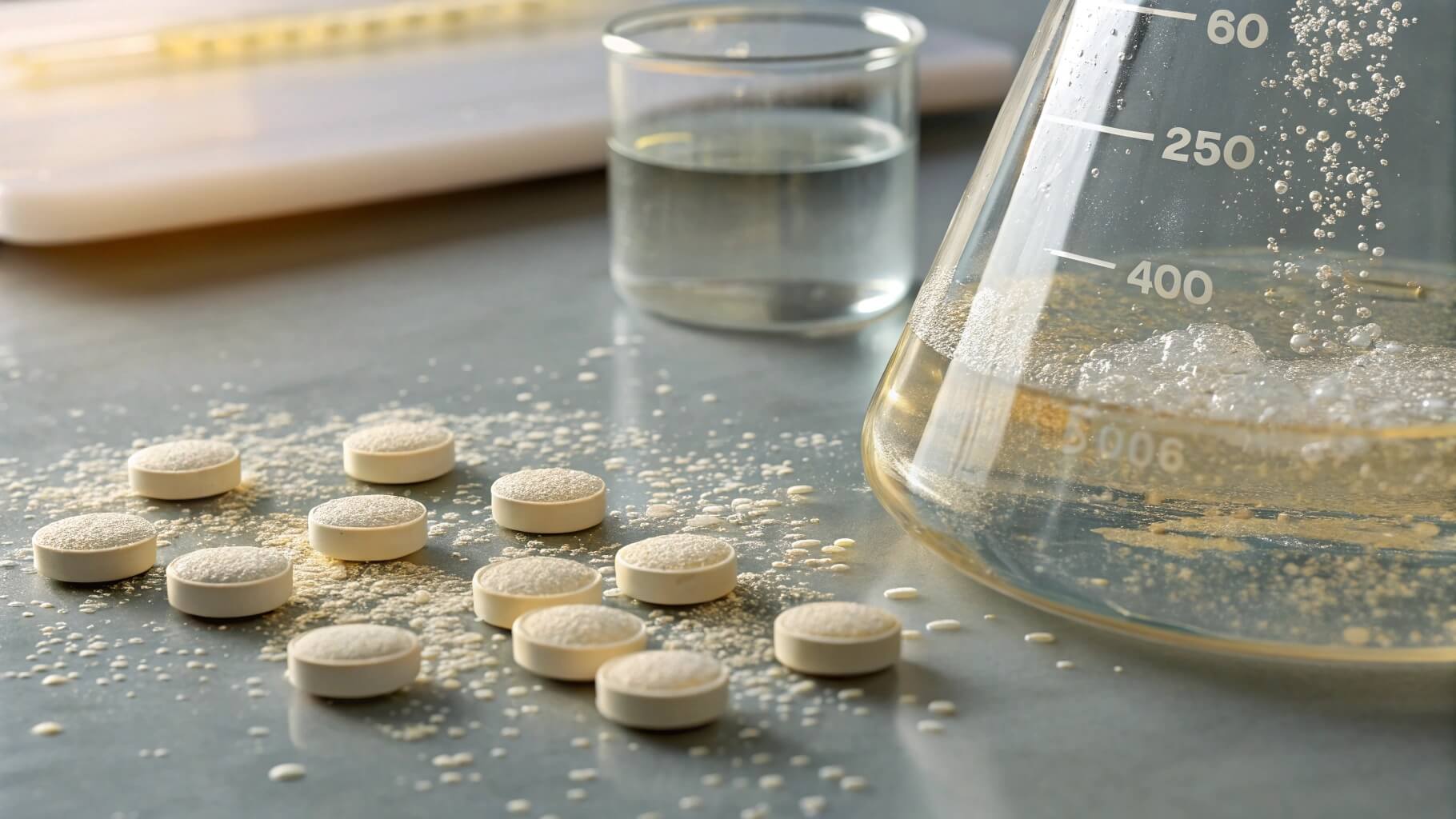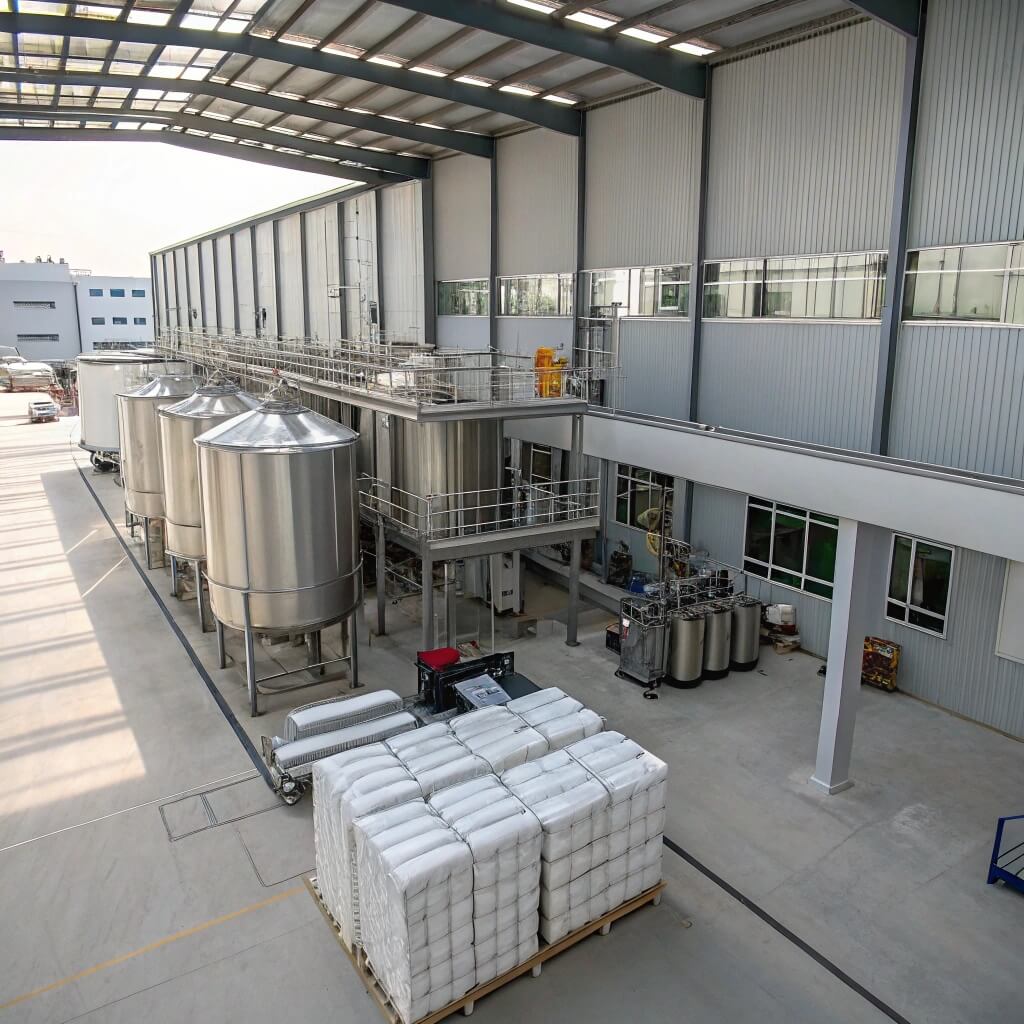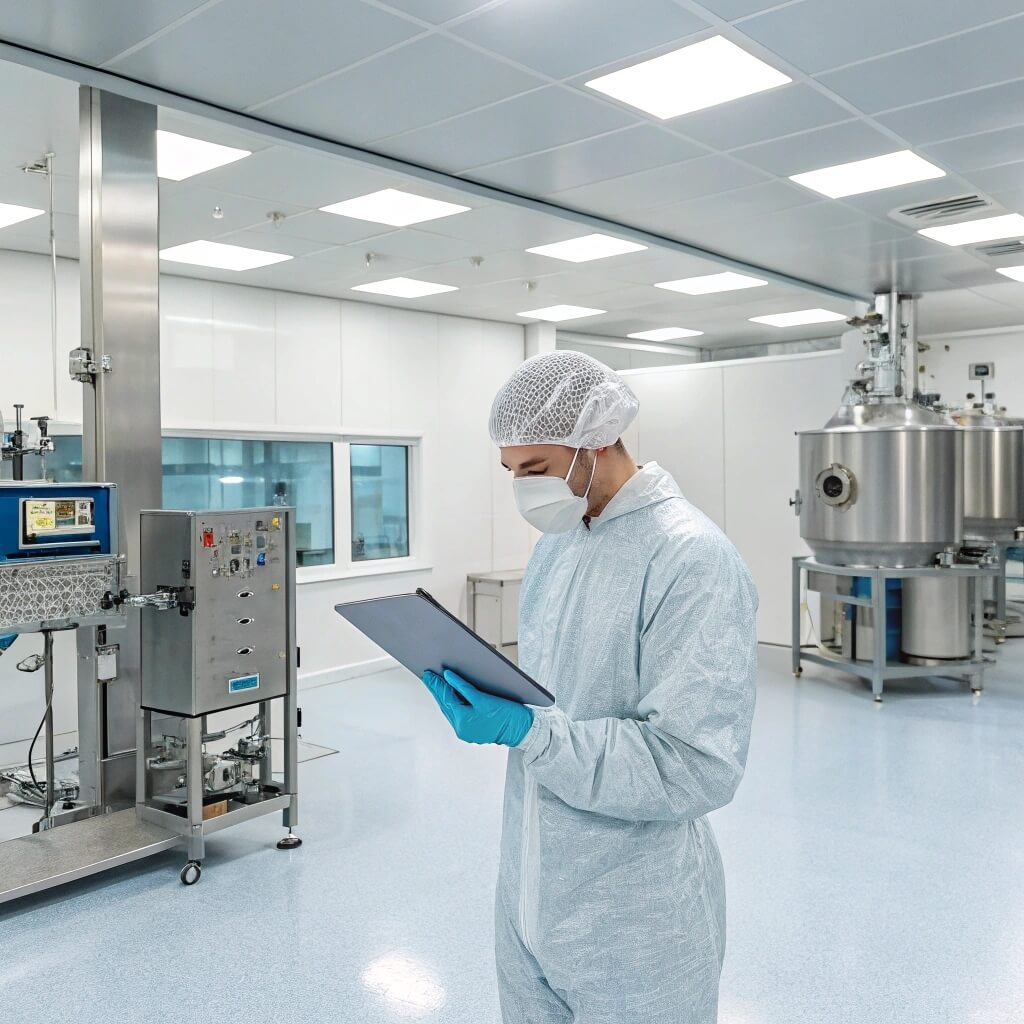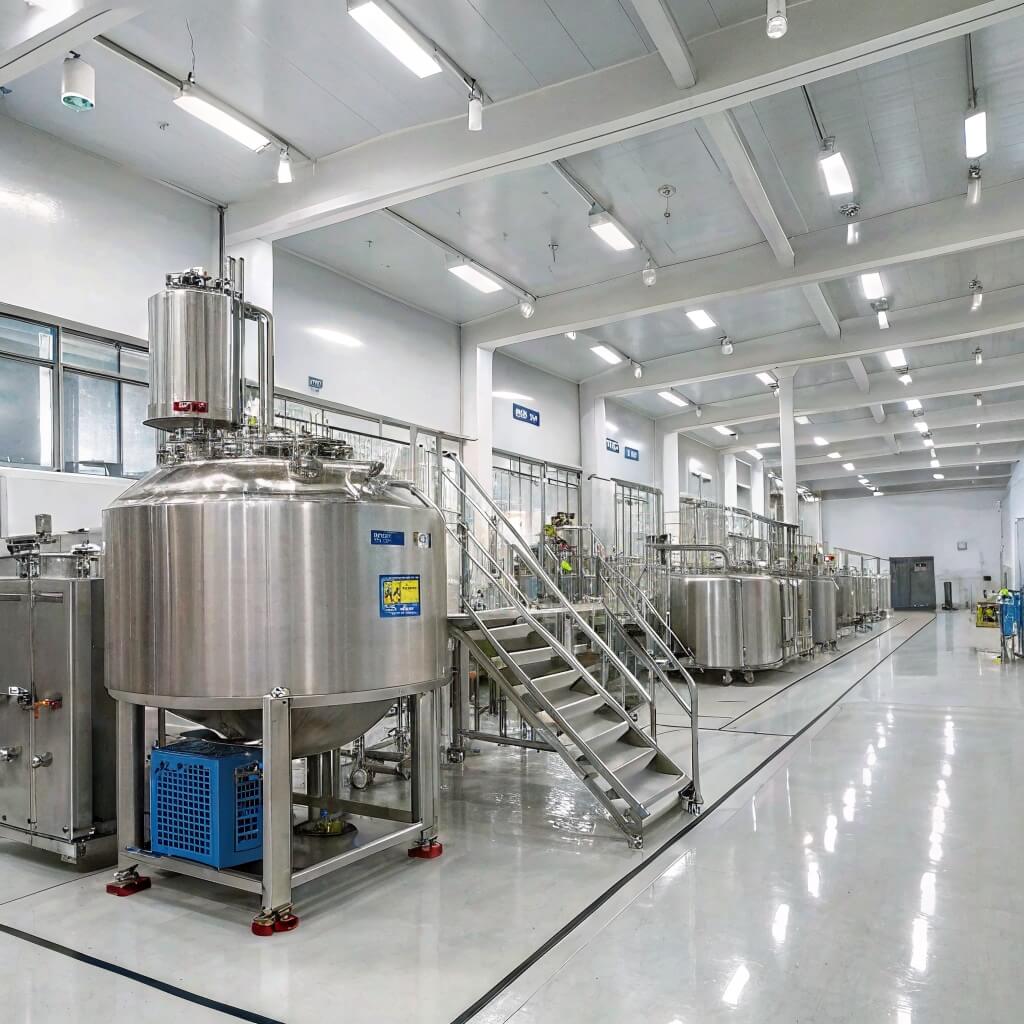When it comes to controlled drug release, finding the right materials to achieve the desired therapeutic effect is key. HPMC-coated tablets are gaining attention as a viable solution.
HPMC-coated tablets are commonly used in pharmaceutical formulations for controlled release. They are an effective choice because they regulate drug release over an extended period, offering better patient compliance and optimized therapeutic outcomes.

This image represents an HPMC-coated tablet, which is key to controlled drug release in pharmaceutical formulations.
To fully grasp the advantages and challenges associated with HPMC coatings, it’s important to dive deeper into the mechanisms that make them so effective. Let’s explore how HPMC works, its role in controlled release, and the factors that come into play when designing HPMC-based formulations.
What Are HPMC-Coated Tablets and How Do They Work?
If you’ve ever wondered about the magic behind those tablets that release their content slowly, you’re not alone. HPMC (Hydroxypropyl Methylcellulose) is a crucial ingredient in many controlled-release formulations.
HPMC-coated tablets release their active ingredients slowly over time, ensuring that patients receive a steady dosage. This mechanism is essential for medications that require consistent release for effectiveness.
In this section, we’ll break down how HPMC acts as a barrier to slow the release of the active ingredient. By forming a gel when in contact with water, HPMC controls the drug’s dissolution rate. This creates a steady release, which improves both the efficiency and safety of the drug.
How Does HPMC Work in Drug Release?
HPMC is a natural polymer known for its ability to form a gel-like consistency when hydrated. This property allows it to control the dissolution rate of the drug it coats. As the tablet enters the stomach and begins to interact with water, the HPMC coating swells and creates a gel layer. This gel slowly erodes, releasing the drug at a controlled rate. The speed at which the drug is released depends on the thickness and composition of the coating, as well as the type of drug encapsulated.
| Factor | Impact on Release Rate |
|---|---|
| Coating Thickness | Thicker coatings release the drug slower |
| Drug Solubility | Highly soluble drugs dissolve faster |
| pH Sensitivity | pH-sensitive coatings release differently at various stomach pH levels |
| Temperature | Can affect the gel formation rate |
This table highlights the key factors that influence how HPMC controls the drug release process. The balance of these elements ensures that the drug is released over time, minimizing peaks and valleys in blood concentration.
Why Is HPMC Used for Controlled Drug Release?
HPMC’s ability to control the release of active ingredients makes it ideal for controlled drug release formulations. But why is it specifically favored over other materials?
HPMC offers unmatched control over drug release, making it highly beneficial for drugs that need to be released gradually, preventing side effects and improving therapeutic outcomes.
HPMC is often preferred because of its high biocompatibility[^1] and its ability to be customized to meet the needs of different drug formulations. In many cases, it can be modified to adjust the viscosity, substitution degree, and dissolution rate, offering flexibility for pharmaceutical developers.
[^1]: Understanding high biocompatibility can enhance your knowledge of drug formulation and safety.
Key Advantages of HPMC Coatings
- Biocompatibility: HPMC is generally regarded as safe for use in drug formulations and is approved by regulatory bodies worldwide.
- Versatility: It can be tailored to create different release profiles based on patient needs and drug characteristics.
- Consistency: The controlled release mechanism of HPMC helps maintain stable drug levels, ensuring better patient outcomes.
These benefits have made HPMC one of the leading choices in pharmaceutical manufacturing for controlled release tablets.
How Does HPMC Coating Affect Drug Release Kinetics?
When we discuss drug release kinetics, we’re talking about the rate and pattern in which the drug is released into the bloodstream. HPMC plays a pivotal role in defining these kinetics.
HPMC-coated tablets are engineered to release drugs at a constant rate, avoiding the sudden spikes or drops in drug levels that can lead to side effects.
HPMC’s gel formation properties allow for a range of release rates, from fast to slow. The key to achieving consistent release is adjusting the formulation parameters, such as coating thickness and drug characteristics. By fine-tuning these parameters, pharmaceutical manufacturers can design tablets that release the active ingredient over hours or even days.
Factors Influencing Drug Release Kinetics
| Factor | Effect on Kinetics |
|---|---|
| Coating Type | Varying coatings can change how quickly the drug is released |
| Particle Size of the Drug | Smaller particles may release faster |
| Tablet Size | Larger tablets may release drugs slower |
The table demonstrates how adjusting these factors can control the kinetics of drug release, ensuring that patients receive a steady and predictable dose.
What Are the Key Factors in Designing HPMC-Based Controlled Release Tablets?
Designing HPMC-based controlled release tablets involves more than just choosing HPMC as a coating material. Several critical factors must be considered to achieve optimal performance.
The design process is crucial for ensuring that the drug is released at the desired rate and remains stable throughout its shelf life.
Some of the critical factors in the design of HPMC-coated tablets include:
1. Drug Characteristics
The solubility, stability, and particle size of the drug all influence how it will behave when encapsulated in HPMC. Some drugs may require additional excipients or modifications to ensure that they are properly released.
2. Coating Composition
The composition of the HPMC coating determines how the gel forms and dissolves. Different grades of HPMC and the inclusion of other polymers can alter the release profile of the drug.
3. Manufacturing Process
The methods used to apply the HPMC coating also affect the final product. Techniques such as pan coating or spray coating can influence the uniformity of the coating and, in turn, the release characteristics of the tablet.
4. Environmental Factors
Factors like pH and temperature can affect how the HPMC coating interacts with the drug and the environment inside the digestive tract. Coatings that are pH-sensitive release the drug more effectively in specific parts of the gastrointestinal tract.
What Are the Benefits of Using HPMC for Modified Release Tablets?
HPMC has numerous benefits when used in modified release tablets. Not only does it enhance drug release profiles, but it also improves patient compliance and medication efficacy.
Modified release tablets offer a better alternative to immediate-release formulations, providing a controlled, consistent delivery of the active ingredient.
Modified release tablets provide a controlled dosage that reduces the frequency of administration, making it more convenient for patients. This is particularly beneficial for medications used to treat chronic conditions, where consistent blood levels of the drug are critical for effectiveness.
Benefits of HPMC in Modified Release Tablets
- Improved Compliance: Fewer doses needed, leading to better patient adherence.
- Steady Drug Levels: Avoids fluctuations in drug concentration, reducing the risk of side effects.
- Customization: The coating can be adjusted to meet specific release requirements for different drugs.
What Are the Challenges and Limitations of HPMC Coatings for Controlled Release?
While HPMC coatings are effective, they are not without their challenges. Understanding these limitations is key to using HPMC effectively in controlled release formulations.
HPMC-coated tablets, while highly useful, present certain manufacturing and performance challenges that need to be addressed for optimal outcomes.
Some of the key challenges associated with HPMC-coated tablets include:
1. Variability in Drug Release
Environmental factors such as pH, temperature, and even the presence of food can affect how the HPMC coating performs, making consistency a concern.
2. Manufacturing Complexity
The process of coating the tablets can be complex and requires careful optimization. Uneven coating can lead to uneven drug release.
3. Stability Issues
Long-term stability can be a concern for some HPMC-coated tablets. Changes in environmental conditions during storage may cause the coating to break down prematurely.
How Is the HPMC Tablet Coating Process Optimized for Efficiency?
Optimizing the HPMC tablet coating process is essential for improving production efficiency and ensuring the desired drug release characteristics.
To produce high-quality, consistent HPMC-coated tablets, manufacturers must optimize the coating process at every step.
The optimization of the coating process involves several stages:
1. Coating Thickness Control
Using advanced technologies to monitor and control the thickness of the coating ensures that the drug release rate is consistent.
2. Spray Coating Techniques
Spray coating is widely used to apply HPMC coatings, but it requires careful control of spray parameters to ensure uniform coverage and the desired release profile.
3. Temperature and Humidity Management
Proper management of temperature and humidity during the coating process ensures the HPMC coating maintains its integrity and performs as expected.
What Are the Regulatory Considerations for HPMC-Coated Tablets?
When developing HPMC-coated tablets, compliance with regulatory requirements is crucial to ensure safety and efficacy.
Regulatory bodies worldwide require specific testing and documentation to confirm that HPMC-coated tablets are safe and effective for controlled release.
HPMC-coated tablets must meet the specifications outlined by various regulatory agencies such as the FDA and EMA. This includes demonstrating bioequivalence, performing stability studies, and submitting appropriate documentation on the manufacturing process.
Conclusion
HPMC-coated tablets are a reliable choice for controlled drug release, offering numerous benefits, including improved patient compliance, steady drug levels, and flexibility in formulation design. While they are not without their challenges, such as variability in drug release and manufacturing complexity, the advantages of using HPMC coatings outweigh these concerns. By optimizing the coating process and ensuring regulatory compliance, pharmaceutical companies can deliver effective, safe, and efficient controlled-release tablets that meet patient needs.
FAQ
What are HPMC capsules used for?
HPMC capsules are commonly used in pharmaceutical formulations for encapsulating both drug substances and dietary supplements. HPMC is preferred for its ability to form a stable, biodegradable capsule shell that doesn’t contain animal-derived ingredients. It is especially useful for vegan formulations.
What polymers are used in extended-release tablets?
In addition to HPMC, other polymers like ethyl cellulose, hydroxypropyl cellulose, and polyvinyl alcohol are also commonly used in extended-release tablets. These polymers control the rate at which drugs are released, providing a steady therapeutic effect.
What does HPMC do in tablet?
HPMC in tablets is used as a binder, film-forming agent, and most importantly, as a coating to control the release of active ingredients. It ensures that the drug is released slowly and consistently over time, improving the effectiveness of the treatment.
What are the applications of HPMC?
HPMC is widely used in the pharmaceutical, food, and cosmetic industries. In pharmaceuticals, it’s used in controlled-release formulations, capsules, and tablet coatings. In food, it acts as a thickening agent, stabilizer, and emulsifier. It’s also used in cosmetics for its moisturizing properties.




